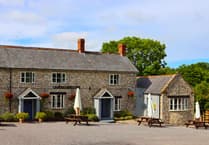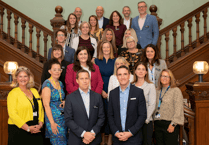A year after Wellington Town Council pledged to help Wellington become carbon neutral by 2030, how is the town doing towards that target?
The council has been working on both the green corridor consultation and lease which will help increase biodiversity, food resilience and community participation in our town. They are employing a new full-time project officer, whose remit will include the carbon neutral strategy work and managing the green corridor, so we will hopefully start to see more evidence of moving towards carbon neutrality.
To assess if we will hit net zero, we need to know what our carbon footprint is now and track progress. Exeter University, with the Centre for Sustainable Energy, have created The Impact Tool - a carbon foot printing tool for communities to estimate the total amount of greenhouse gases produced in their locality. (impact-tool.org.uk). Wellington’s “Consumption Footprint” totals 100,041 tonnes of CO2 equivalent, which equates to an average of 14.8 tonnes per household. Wellington is slightly below the national average of 15.8 tonnes, partly because many of our houses have gas central heating which emits less CO2 than oil, and we don’t have to travel far to get to the shops.
How does your footprint compare to the town’s average? Are there areas which you could improve? There are many online calculators, but their results can vary. I like carbonsavvy.uk/calculator/ whose in-depth one asks more specific questions, and includes questions on growing your own food, avoiding waste, eating local or organically produced food and shopping ethically or second hand. If you have read the other articles this year you will know it makes a big difference. It also gives you a personalised list of suggestions to save carbon, based on your answers.
Whichever one you choose, make sure you do the same one every year so you can track any improvements. It will help you figure out what improvements are going to make the most difference. Let’s all make this our New Year’s resolution, and see how much carbon footprint and money we can save in the coming year.
Can we begin to imagine what a lower carbon lifestyle will look like? If society can look towards the future not focussed on money, growth and possessions but on our community’s and natural environment’s wellbeing, we could all have a better life. We have a massive challenge on our hands to fix our world, and although it needs the governments and councils to act, it’s going to take all of us.
Part of this is changing the way we look at things. Instead of “managing with less” which makes us feel like we are missing out, why not change it to a positive and think of what we will gain from re-purposing, buying pre loved and valuing what we have, never wasting anything, growing our own food if we can. Rather than using the words “neglect” or “weeds” why not learn to appreciate the beauty of wildflowers and the casual softness of the natural world, to hear more birdsong in our daily lives.
What is luxury anyway? An extra-long hot shower, buying new clothes, foreign holidays? It is based around excess and it all has to be paid for, both with money and the environmental impact. More of us are starting to value our local environment, a tight knit community and good company as the important things, and realising that humans aren’t the only creatures with a right to live on this earth, which in turn will help us step lighter on the planet.
Transition Town Wellington





Comments
This article has no comments yet. Be the first to leave a comment.